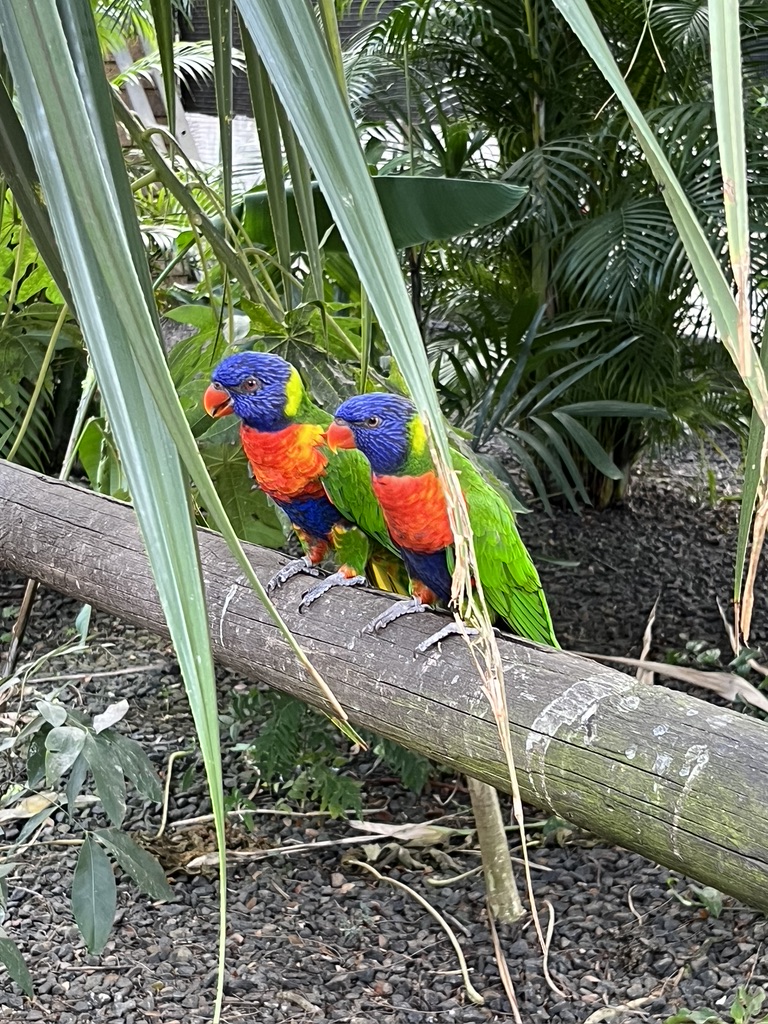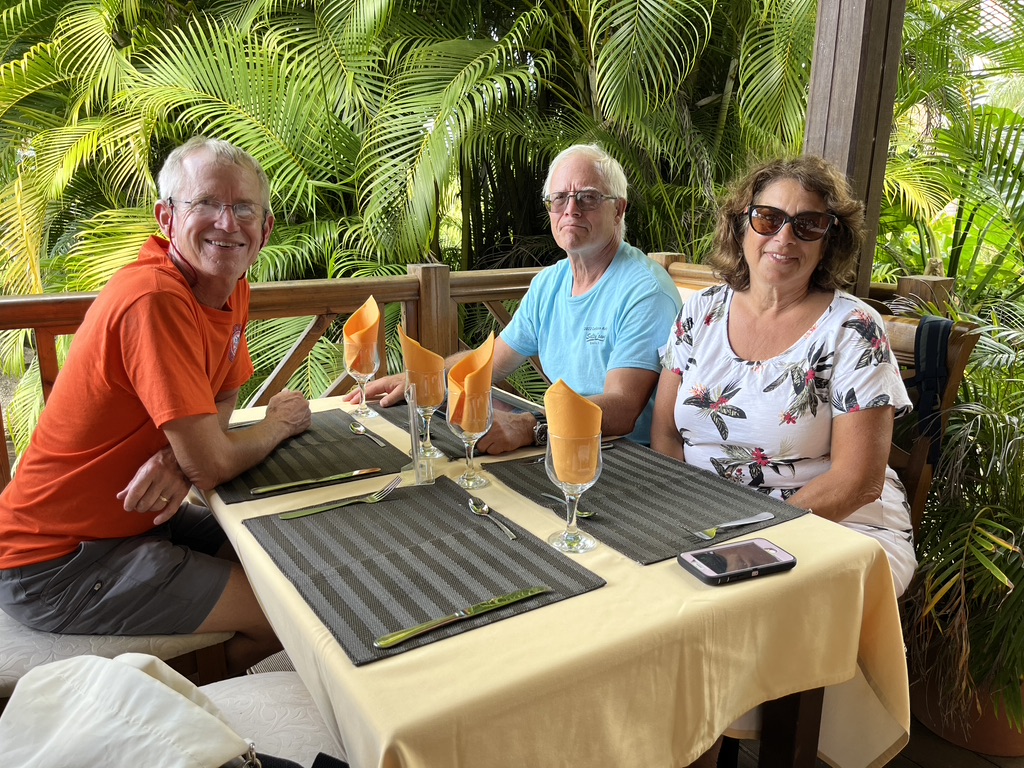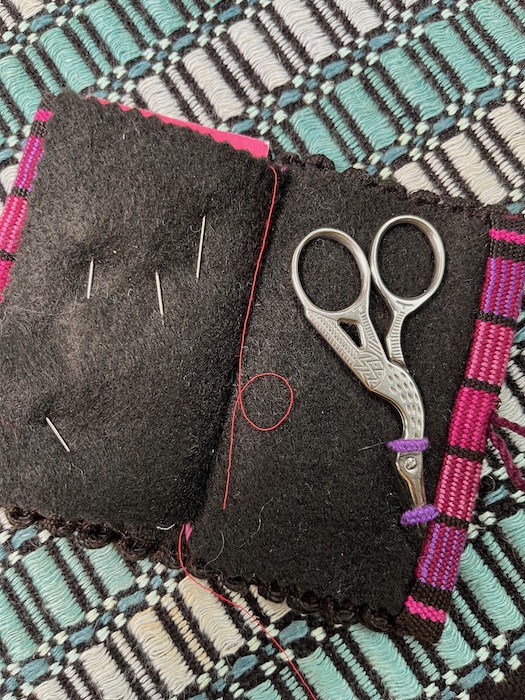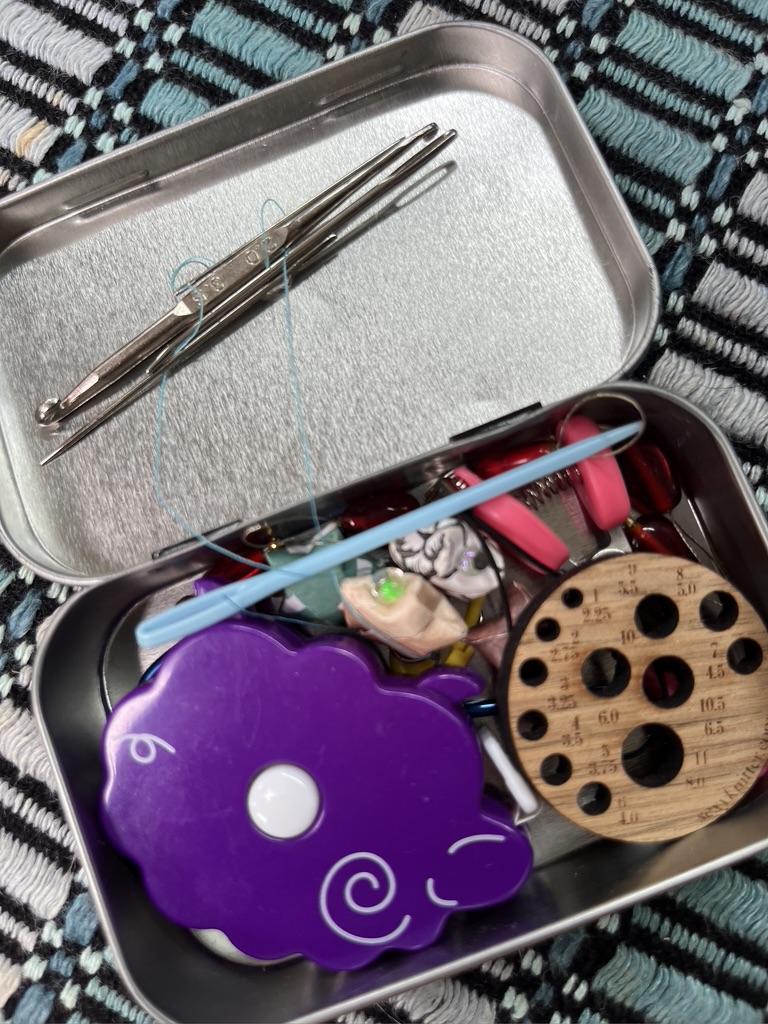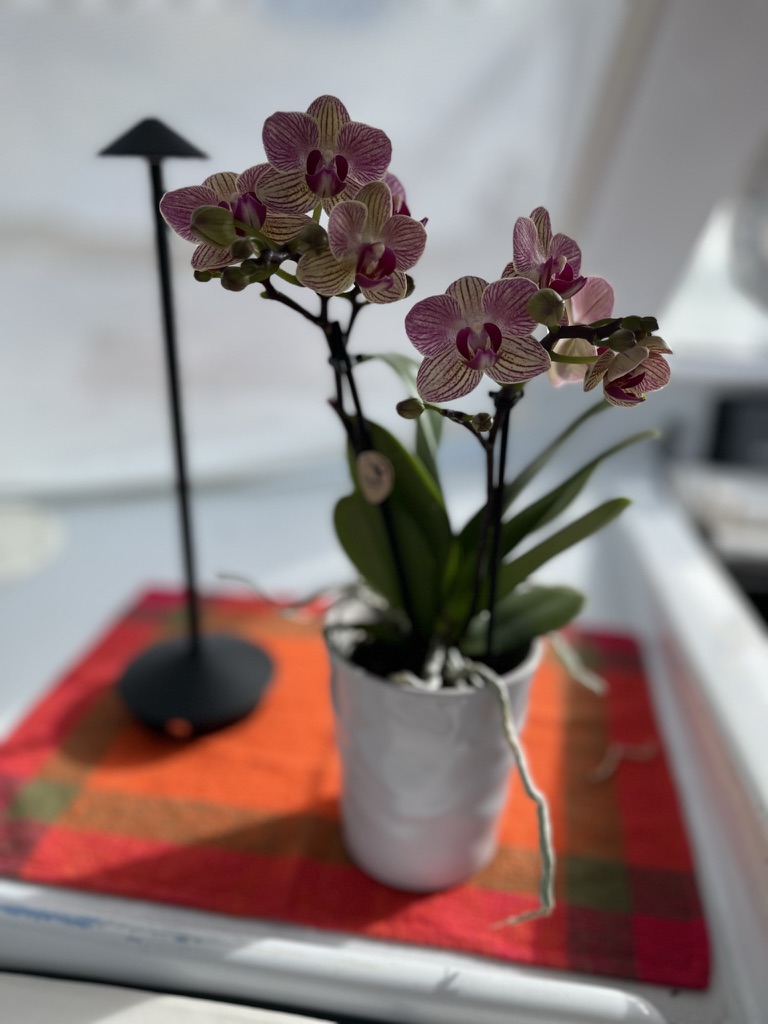Things changed rapidly between my last post and now. This season has had some cruel surprises. I have struggled to process these, so I felt silenced, not only from writing but also from other things. Bob has done an exceptional job not only handling these situations, but also writing about them.
In my silence I have been weaving, and knitting, and even making a couple of small basket projects. It has all been somewhat disappointing and frustrating. I guess I was expecting more….and better. I’ll get to that momentarily.
Meanwhile, there are always scenes. Caribbean colors, sunrises and sunsets, moon rises and moon sets, rainbows, all daily. We’ve been lucky to spend some great time with friends who have now become old friends. The years have flown by and friendships deepen. My land friends have rallied around me with great care. I thank each of you beyond words. I don’t mean to be secretive. Bob has said it all so well there is nothing for me to add.
Before the couple aboard Simplicity were attacked, we were in Fort de France, where I always visit a fabric store called Doum 2000, and where I look for linen fabrics from France. This year I found this wonderful eyelet fabric (cotton) in a glorious orange. While this display shows how well it would look as a skirt, I am planning a jacket.
Doum 2000 never disappoints in tempting me with wonderful linens. I must be in an orange mood this year. The printed linen fabric is very sheer. Perhaps a floaty top of some kind?
Here is the small basket. It’s going to be a birthday present for my older son, whose birthday was just over the weekend. Somehow he has now turned 40. This is supposed to be a wine bottle coaster, but it can surely be used in lots of other ways too. The maple base has a crab lasered onto the inside, and since our son lives in Maryland, it seemed the right base to choose. I will make another basket for our younger son, who also has a birthday approaching, when I get home. It has a horse shoe crab lasered design. Neither son ever looks here, so the baskets will be a surprise! This basket needs sanding and varnishing and the hole in the bottom gets a tiny corian plug instead of the traditional ivory plug. The key fob is for me!
There is progress on my first wedge weave tapestry, but I am not happy with it. It seems like I’ve put a ton of time into this for no good reason. I am trying to change my attitude to one of thankfulness for the experience of learning this technique, and also managing to weave some Gobelins style figures into the wedge weave. I have learned a lot, but it’s a bitter pill to work on something and decide it’s a failure. I know I should be thinking that disappointing outcomes lead to better understanding of where I’d like to go next time I sit down to weave. But….still….this is disappointing. Here are a few images to show how this piece came to fail.
If only I’d paid more attention to how wonky my green wedges had become right here. I was just so happy with my inserted squares.
And then came the circle. I was quite happy with that. The thing is, I know how to weave shapes in standard tapestry. The point of this was to learn wedge weave.
A couple of days ago I reached the point where I could no longer weave without shifting the warp downward so I could have more weaving space. I’ve done this on Gobelins style tapestries before, but never on wedge weave. Have you done it? I feel like I lost control of the tension when I moved the warp. Another disappointment. I won’t do that again. Bigger piece, bigger loom, next time. And when you cannot see the whole piece it’s hard to decide if it’s done. Since I’m rather disappointed with this piece, I’m going to level it off and call it done even if I can’t see the whole thing to make a decision. When the fell is level I will do a row of knotted soumak and cut it off. Then I can transport it home without the loom. One good thing.
I have three unfinished sweaters onboard. I cannot even bring myself to describe them, and my waste of time in not knuckling down on the right one to finish. Boy, I have wasted time on these sweaters! But I did finish spinning some lovely merino/silk and now have five full bobbins to ply at home. And I made a small shawl with an intriguing stitch design that looks a bit like butterflies. I will soon get some wear out of this on cool April days in New England. It needs better blocking when I get home. I did not have nearly enough pins to block the lace points.
Here is detail of the little butterflies (sideways).
And speaking of April, we have made our flight reservations home for April 1st–from Antigua. We are at the southern end of Martinique right now, in a village called Ste. Anne. It’s now time to start retracing our steps north to make that flight. I feel like I need a week to corral all my supplies into vacuum bags to shoe-horn them into our not-very-big duffle bags. We may need to find a giant box, or rent a car to drive to St. John to buy a big suitcase. Considering how disappointed I am with most of my work at this point, I sure wish I hadn’t brought all this stuff onboard.
I’ve put off writing for at least a couple of weeks due to my dark mood. I probably should have waited longer. I always think silence is best when I can’t be enthusiastic or positive. I am counting on a change of scenery–to New England spring!–to help my outlook. There should be daffodils by then. Fingers crossed.
And just to prove I am not completely in a funk, I will show you the rabbit hole that has drawn me in this week. I’ve just learned that there is such a thing as sashiko-ori. Woven sashiko. How about that? I’ve seen some lovely examples, and I even learned that someone in my guild is currently weaving this technique. I got in touch with her, and she has offered to get together and show me how to design in this technique. It’s basically supplemental warp and weft, and I’ve done a lot of supplemental warp scarves in the decades when I sold my weaving. Here is my current drawdown of an idea. It’s not quite what I want but I’m sure my friend Julia will set me straight when we meet.
I’d like to use my hand-dyed indigo linen yarn that is fairly fine, and the supplemental warp and weft will be natural sashiko embroidery thread. I can’t say more because some people might look at this post and then their future gifts won’t be a surprise! Mums the word.
I look to the work I do with my hands to keep me in balance, to get me through good times and bad. When multiple things go wrong just when I need a break from other things, it’s difficult. But that’s how it goes, doesn’t it? Ups and downs. The sons of the couple who died last month wrote a beautiful tribute to their parents, and this quote comes back to me every day over the past month:
We live in a world that at times can be cruel, but it is also a world of profound beauty, wonder, adventure, love, compassion, caring, and faith...












